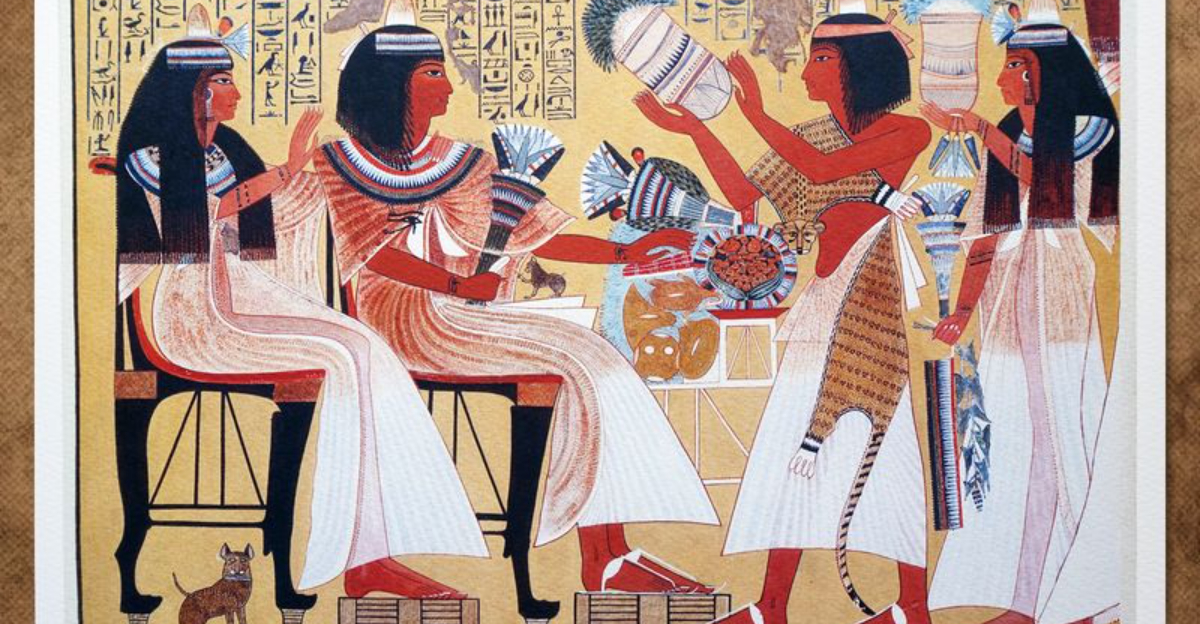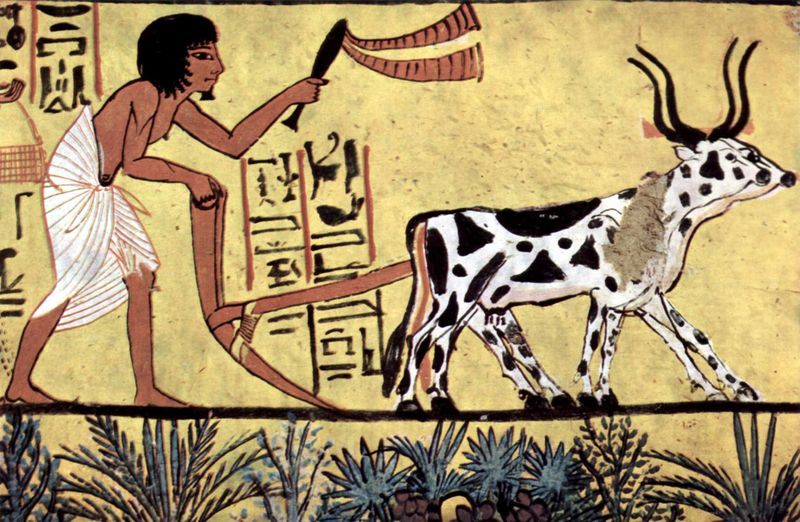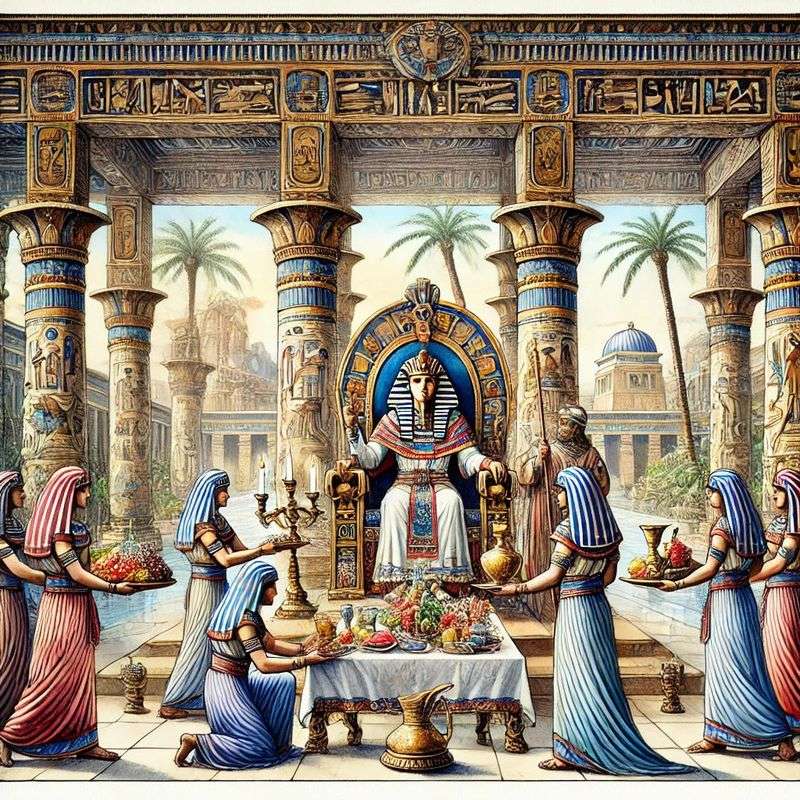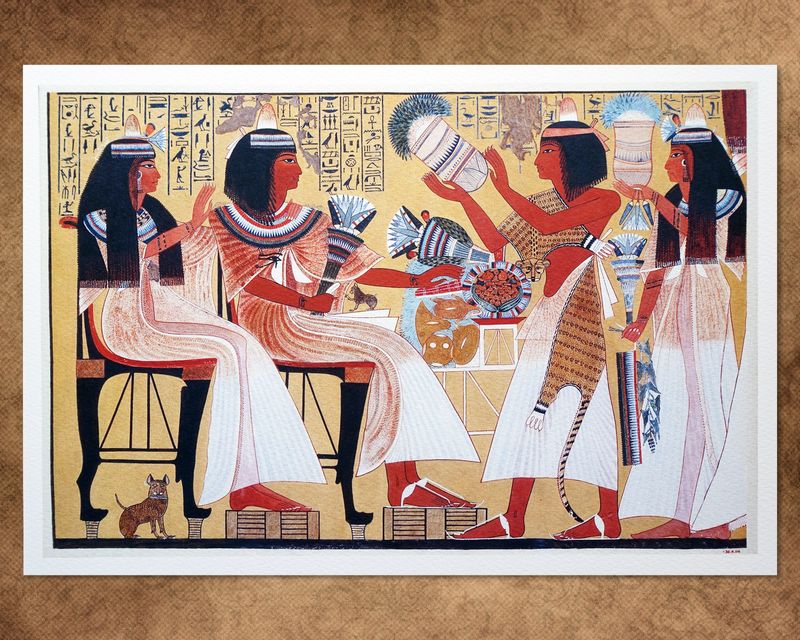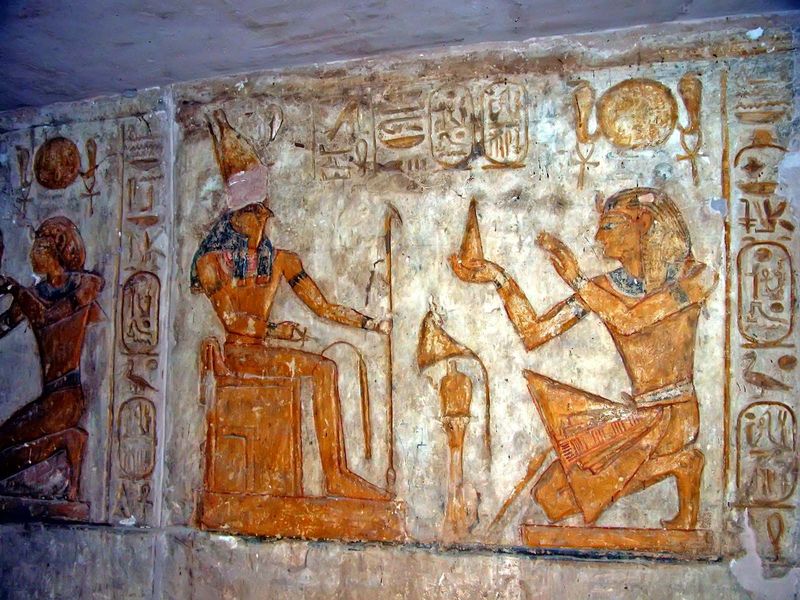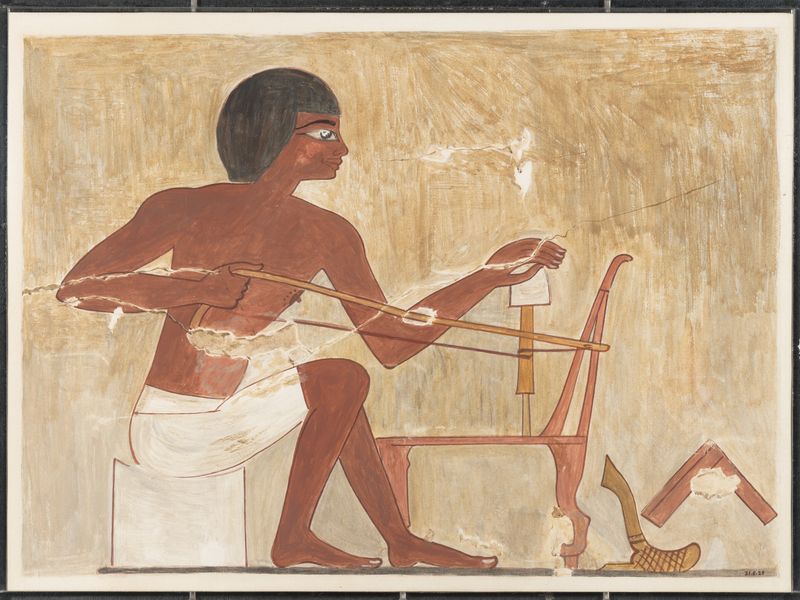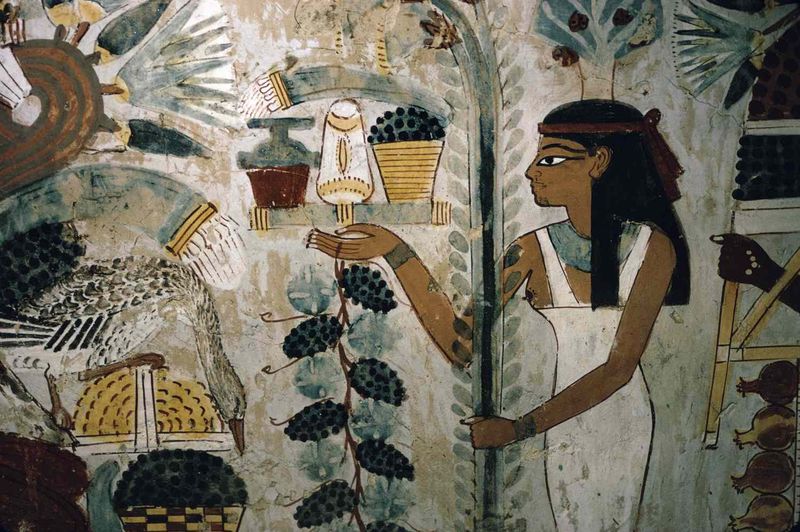Step back in time to explore the bustling streets and serene fields of Ancient Egypt.
This ancient civilization thrived along the Nile River, and its culture was rich and vibrant. Everyday life in Ancient Egypt was a unique blend of work, leisure, and spirituality.
Join us as we uncover the daily routines and societal norms of this fascinating era.
1. Nile River Farmers
In Ancient Egypt, the Nile River was the lifeblood of agriculture. Farmers worked tirelessly to cultivate wheat and barley, vital grains for sustenance. The annual flooding of the Nile deposited nutrient-rich silt, creating fertile soil.
Farmers spent long hours in the fields, using wooden plows and simple tools. Despite the harsh sun, their efforts ensured bountiful harvests. Agriculture was not just a livelihood but a community affair, bringing families and neighbors together. The sight of farmers working harmoniously by the river was a testament to their dedication and resilience.
2. Egyptian Marketplace
The marketplace in Ancient Egypt was a vibrant hub of activity. Merchants displayed an array of goods, from pottery to textiles, enticing buyers with their skilled craftsmanship. This was where people gathered, not just to trade but to socialize.
Navigating through the noisy stalls, shoppers could find exotic spices, jewelry, and everyday essentials. The marketplace was a mélange of colors, sounds, and scents. It was more than a place of commerce; it was the heart of social interaction, where friendships were forged and stories exchanged.
3. Pharaoh’s Court
The Pharaoh’s court was the epicenter of power in Ancient Egypt. Here, decisions that shaped the kingdom were made. The Pharaoh, often seen as a god-like figure, presided over his advisors and subjects with grandeur.
The court was adorned with opulence, from golden artifacts to intricate hieroglyphics on the walls. Servants moved gracefully, attending to the needs of the elite. It was a place of both reverence and intrigue, where politics and religion intertwined seamlessly. The court’s splendor reflected the divine authority of the Pharaoh.
4. Family Life in Egypt
Family was the cornerstone of Ancient Egyptian society. Families were close-knit, with strong ties binding them together. Daily life often revolved around shared meals and communal activities.
Parents instilled values and traditions in their children, ensuring the continuity of their rich heritage. Homes were modest, yet filled with warmth and love. Despite the hierarchical society, family life was a haven of equality and support. The bonds forged within the household were enduring, providing a sense of stability and belonging.
5. Egyptian Religious Practices
Religion was integral to everyday life in Ancient Egypt. Temples dotted the landscape, serving as centers of worship and community gatherings. Priests conducted elaborate rituals to honor the gods, ensuring their favor.
These ceremonies were attended by devout worshippers, dressed in traditional attire, who offered prayers and sacrifices. Religion permeated all aspects of life, from agriculture to governance, providing both comfort and structure. The spiritual connection to deities influenced moral conduct, emphasizing harmony and balance.
6. Art and Craftsmanship
Ancient Egyptian art and craftsmanship were renowned for their precision and beauty. Artists and craftsmen were highly skilled, creating masterpieces that have stood the test of time.
From sculptures to intricate jewelry, their work was a celebration of Egyptian culture and innovation. Each piece told a story, depicting scenes of daily life and mythology. Artisans worked diligently, passing down techniques through generations. Their creations adorned temples, tombs, and homes, leaving a legacy that continues to captivate us today.
7. Education and Learning
Education in Ancient Egypt was a privilege for the few, primarily boys from wealthy families. Schools were often attached to temples, where scribes imparted knowledge on subjects like mathematics and writing.
Learning hieroglyphics was a painstaking process, essential for those aspiring to become scribes. The classroom atmosphere was strict, with discipline being paramount. Despite these challenges, education opened doors to prestigious careers in administration. It was a gateway to upward mobility, bridging the gap between commoners and the elite.
8. Egyptian Cuisine
The cuisine of Ancient Egypt was both simple and flavorful. Bread and beer were staples, accompanied by fish, fruits, and vegetables. Meals were communal, bringing families together.
Cooking methods were basic, yet the flavors were rich, reflecting the abundance of the Nile. Herbs and spices added depth to dishes, making each meal an experience. Food was not just sustenance; it was an expression of cultural identity and hospitality. Sharing meals strengthened social bonds, fostering a sense of community and belonging.
